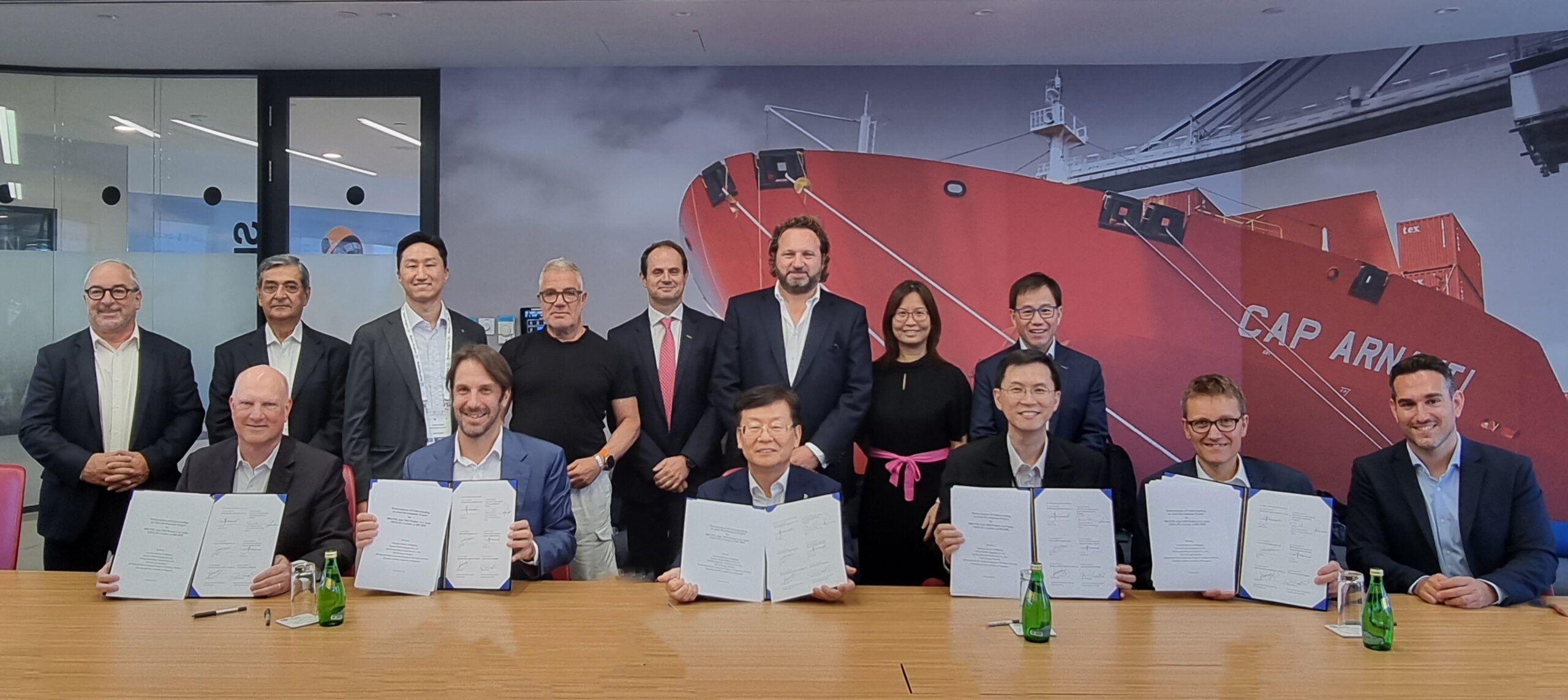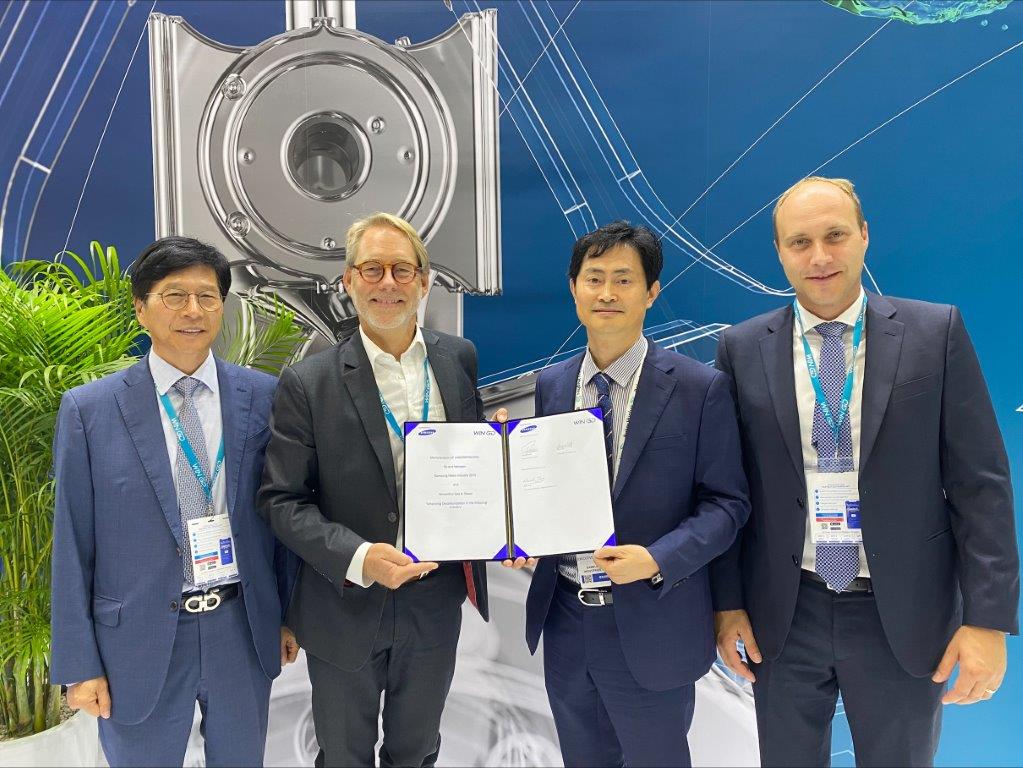As the International Maritime Organization fills in the gaps of the roadmap to shippings’ decarbonisation it needs to resolve the well-to-wake Vs tank-to-wake accounting issue, Samantha Fisk heard from Kongsberg’s Oskar Levander on how to resolve the issue.
There is a big debate looming. Should the emissions accounting for shipping be only what comes from the ship’s funnel (tank-to-wake accounting) or from the whole fuel supply chain, known as well-to-wake in reference to fossil fuel origins, but beginning to be used to reference the manufacture of some synthetic fuels? Oskar Levander, Business Concepts, Kongsberg joined other experts that have been proposing that shipping needs to look at the total fuel supply chain, and not just shipping’s part.
Levander noted that there have already been key developments in other industries pioneering new technologies, like the automotive industry with battery cars. But if you take an overview of the whole supply chain of where the power is still coming from is the car then that ‘green’.
The same scenario can be applied to shipping with new fuels and power solutions that are coming on to the market. If those fuels are still creating pollution or more waste in their production, are they a cleaner alternative for the industry to be using?
Levander highlighted that for shipping companies to be involved in selecting the correct fuel type Kongsberg has created its energy triangle with factors that need to be considered in this choice, which looks at the main target of reduction of emissions. For this the triangle looks at how to minimise energy consumption then at a clean energy source and then the last side of the triangle looks at how to use that in the most efficient way.
Also, he stated that mainstream shipping tends to face a different world where it might be hard to comply to existing regulations. For this the industry needs to keep in mind, when looking at solutions, that they will need to work for all sectors of the industry, but foremost will need to cater for mainstream shipping for the reduction of future emissions.
To be able to have a more holistic approach in the reduction of emissions Levander said that shipping can have an effect on the supply chain and future fuels: “The power is in the hand of the consumer. But, shipping needs to start to understand the well-2-wake difference between different fuels”, he says.

WhIle there has been discussion and debate around the industry about the merits, or faults, of certain fuels, the general consensus has been that there will be a number of different options emerging. No one solution will fit all ship types or industry sectors.
There are various fuel sources that are being touted to be a solution for the shipping industry in the future but today some are looking to be more likely than others. LNG is still a popular choice as infrastructure and the ships are now starting to come into operation.
Levander is no stranger to LNG as a marine fuel, working for many years at Kongsberg competitor Wärtsilä as it developed LNG fuel systems including dual fuel engines for the industry.
“It’s already a preferred fuel for some ship types like RoPax ferries and large cruise ships,” said Levander. “However, LNG is still a fossil fuel with CO2 emissions, so it will not be able to offer the needed CO2 reductions to meet IMO targets for 2050”.
Hydrogen
Hydrogen has begin to be seen as a solid contender for shipping. What makes it so attractive is that it will be able to cut emissions to the standards that would meet with regulations.
But, as with LNG there are still challenges that lay in its path if it is going to come into commercial use. Infrastructure, safety and space demands are all important factors to consider when looking at this fuel. Another issue to take into consideration Levander notes, looking at the well-to-wake scenario, is the actual production of the hydrogen.
“Today about 90% of the world’s hydrogen is produced by steam reforming of natural gas. Using H2 produced this way to power ships will result in higher GHG emission compared to using diesel when looking at the entire well-to-wake chain, so H2 produced this way will not help with our climate change challenge”, explained Levander.
However, hydrogen can be produced in a more environmentally friendly way using electrolysis. As Levander explained that it is only produced today this way by a few percent but would be the environmentally friendly way of producing hydrogen.
Currently Using the average electricity from the grid in EU will result in about 300% higher GHG emission compared to diesel. To make hydrogen greener Levander says that: “The way to make H2 attractive as a marine fuel, from the environmental point of view, is to use electrolysis with electricity from a renewable or clean power source, such as wind, sun, surplus/stranded electricity.”
Both LNG and Hydrogen do seem to be able to offer the industry a solution for its emission reduction issues, but in the current market until further developments can be made with hydrogen, LNG is still a favourite. “it is a future proof solution to invest in LNG today, unlike the situation for H2. It is not possible to buy a large H2 or NH3 powered ship today that is well proven and can operated worldwide”, highlights Levander.

































